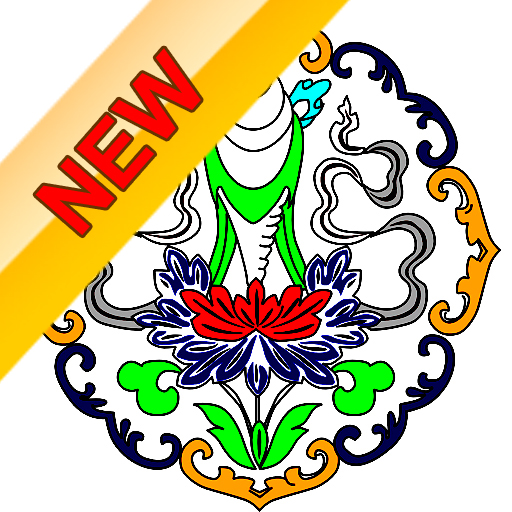iThangka線描唐卡精選

- Publisher: Arelin.INC
- Genre: Photo & Video
- Released: 21 Dec, 2009
- Size: 17.0 MB
- Price: $0.99
 Click here to request a review of this app
Click here to request a review of this app
- App Store Info
Description
The concept of Original Artistic Intent is difficult to apply to Tibetan thangkas. Thangkas are composite objects produced by painters and tailors with differing intents, skills and training. Iconographic specifications, regional and doctrinal differences in style, changes in form from harsh treatment and altered mountings all complicate the issue.A thangka is a complicated, composite three-dimensional object consisting of: a picture panel which is painted or embroidered, a textile mounting; and one or more of the following: a silk cover, leather corners, wooden dowels at the top and bottom and metal or wooden decorative knobs on the bottom dowel.
Can you say that there was an artist who had a prevailing artistic vision over the entire composition? Rarely. Is the thangka which you are examining in your laboratory today in its original form? Probably not.
What is the purpose of a thangka, what use was it originally intended for? Thangkas are intended to serve as a record of, and guide for contemplative experience. For example, you might be instructed by your teacher to imagine yourself as a specific figure in a specific setting. You could use a thangka as a reference for the details of posture, attitude, colour, clothing. etc., of a figure located in a field, or in a palace, possibly surrounded by many other figures of meditation teachers, your family, etc..
In this way, thangkas are intended to convey iconographic information in a pictorial manner. A text of the same meditation would supply similar details in written descriptive form.
n summary, thangkas are complicated composite objects which are designed to communicate iconographic ideas in a beautiful and practical form. A thangka in your laboratory or collection may be the production of many painters and tailors with differing intents, and differing skills and training. The textile mounting may have a completely different style, date and region of origin from those of the painting.























